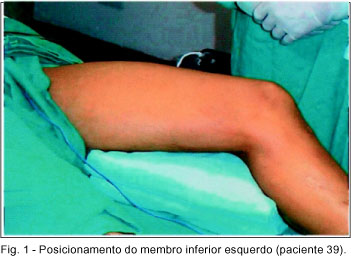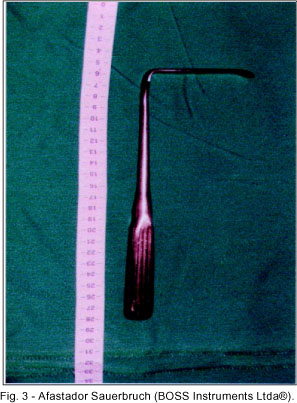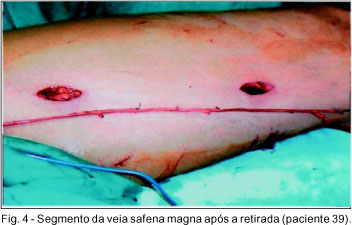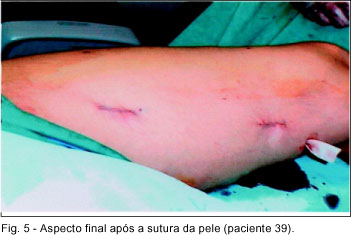Objective: The aim of this study was to evaluate the possibility of excision of the greater saphenous vein through the minimal invasive technique, assessing its morphologic quality and the early complications in the leg wound. Material And Methods: From July to November/1999, 46 patients received aortocoronary saphenous vein bypass graft. A miniincision was made, the vein was identified and gently dissected out with a special retractor, with a long and narrow blade. The samples of the vein were sent to histological analysis. Taking into accounts the presence or absence of the risk factors (female sex, anemia, obesity, peripheral vascular disease and diabetes mellitus) the patients were divided into two groups. The wounds were inspected, looking for majors and minor wound complications. Results: The average number of incisions was 2.3, the average length was 3.5 cm, and the average of all incision length was 7.3 cm. The average length of vein harvested was 34.1 cm. The mean duration of the procedure was 28.7 minutes. Minor leg wound complications occurred in 5 (10.8%) patients and the most common problem was local hematoma (6.5%). There were no major complications. The macroscopically evaluation showed two tears but the correction was possible. Histological study showed that vascular integrity was maintained and there was no significant endothelial damage. Conclusions: It was possible to harvesting satisfactory length of the vein through minimally invasive technique. This technique does not compromise the morphological quality of the vein graft. A low incidence of leg wound complications was observed, independently of the risk factors. These initial results suggest that this technique can be satisfactorily used for harvesting the greater saphenous vein. However, the long-term results still remain to be determined.
Myocardial revascularization; Cardiac surgical procedures; Saphenous vein; Saphenous vein; Surgical procedures minimally invasive; Saphenous vein













